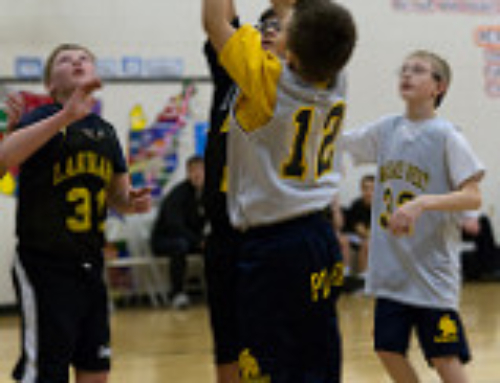Building Offensive Strategies
By Brandon Rosenthal, Phoenix Suns
Early in the season there are numerous things that you need to accomplish during practice, then later in the season you want shorter practices and you need to be more efficient with your time. As the season progresses, you see inefficiencies and areas that need improvement.
When working on offense, the offensive-minded coach will work a bit on defense, while the defensive-minded coach will work some on offense to help improve defense. There are opportunities both ways to teach teammates how to be better basketball players, to make reads and make decisions – you can help your players evolve.
Unfortunately, with youth basketball, the kids often just play games and don’t work on the fundamentals. Even in high school basketball, sometimes athletes just like to play fast. That’s how they play all the time and they’re not really reading or making very many decisions.
Try to create practices where a lot of decision making is involved so that your players learn how to read and react. They can learn from scenarios like this: If the defender is here, I need to make this type of pass. I’ve got this much space. I guess this is a good time for me to shoot. Then put those skills into live play during competition, where players have to use the skills and decisions that they have practiced or discussed.
If you do dummy five or practice no offense, make sure you teach all the different decisions that the player will make offensively. At some point add a defense so they can practice the same exact decisions and same exact reads with live defense; then you’ll know what skills are needed within those decisions. If the ball starts on the wing and they’re throwing it to the elbow, train either coming on or off the elbow catch.
Train as if there’s a strong side corner field player there. They need to know how to play with that guy: whether to go and set it down screen and if so, whether the offensive player is going to curl it, reject it or flare. Then train how they need to catch and pass the ball. Last, but definitely not least, train the finish – you need to have a diverse finishing package.
Evaluate your personnel. Evaluate the various skills that you need in each phase to help plan your practices.
In training for offense, start by looking at floor balance, spacing and what the opponent does defensively. Then teach your players how to flow into the offense. When they’re running down the floor, where should they go? From a very basic standpoint, you probably want to get your wings to run wide, to the deep corners, because that hopefully takes the defense with them.
If you have a rim run big, do you want him to run right to the front of the rim? Do you want him to run all the way down to the baseline or short corner? Do you want him to trail the play?
Where you do want the last big down the floor? Do you want him going opposite of the ball? Do you want him running into a ball screen? Do you want him running into an action?
Start with how you flow into the offense first. That sets you up for your half-court execution, where change of speed is a big factor in setting up the defender and using proper footwork and technique.
Look at what’s going to happen once the ball starts moving, whether it moves with the pass or with the drive. Those things create a domino effect. How do you want to get that first domino to fall offensively? There are some basic principles to consider:
- When you drive the ball and make the first pass, most of the time you want that offensive player to either pass or shoot the ball. You don’t want to create drive-drive situations because then you’re just driving the ball right back into the defense and spacing is really poor. Be aware of where the ball is going to move and what that spacing will look like.
- Then, what triggers do you want to put into your offense? For example, anytime the ball goes into the post, you have a couple of options. You can speed-cut baseline, the popular Chicago cut – you can cut over the top of the big in the post. Or you can split away; when the ball goes in the post, you split away and just play out of that. You may also have triggers when the ball gets to certain spots on the floor, such as a corner. Maybe then it’s an automatic corner ball screen. If the ball goes into the high post, that may also trigger a specific action. Teach and train!
This is getting away from traditional sets. Those sets can be valuable if you want a specific player to shoot, but constantly running sets can turn your players into robots.
The ball creates energy. When the ball touches a lot of different hands, that naturally feeds into the team playing better defensively, it feeds into your big screen harder, or it feeds into players that are willing to make an extra pass. You want to create an offensive continuity where there’s a good flow to it, so you need to teach the game and teach different actions. You can do that by teaching your athletes how to play one-on-one, how to drive and attack, and then how to play with a teammate playing two-on-two one side of the floor.
Then have them play three-on-three and all the different actions you can come up with three-on-three: dribble handoffs, hand-backs, pin-downs, staggers, playing out of the post, playing out of the pinch post, ball screen actions. When they are comfortable with all the different reads and decisions they need to make, introduce them to four-on-four and eventually five-on-five, convenient in the half court, and then being able to do it in transition and fall into offense.
It just comes back to what’s your personnel? What actions do you want your personnel to run to be successful in the shots you want them to create? Then what are your different principles within your offense? If the ball goes here, we’re going to do this. If the defense does this, this is the alternative read that we’re going to make. Start early with transition offense since the majority of the game is built from that. Then regarding half court: Are there specific guys that need to get shot? Then these are the sets that we can run to get them shot. Or can I teach guys how to make reads and make different decisions? Ultimately, that makes you more difficult to defend. And you probably already know that some of the toughest teams to defend are the ones that are unpredictable.
The biggest bang for your buck is going to be practicing the fundamentals of the game – passing, dribbling, shooting. Also important is decision making – making reads and understanding different options based on what the defense is going to do and reacting to it. Think about this scenario: You are a high school coach with 10 players on your roster. During every practice you work on fundamentals and decision making and your players get better as passers, dribblers and shooters. Before you know it, the defense has to work hard to react to the offense.
Ball movement is huge. The dribble is most effective when you’re able to attack the paint. If you’re able to make the defense collapse, then you can get the ball to your shooters. Again, the game is totally built on fundamentals. Action shots, shots that are on the move, shots that are off the screens that you set, cuts that you make off the post – those things all involve the timing of your offense, team cohesiveness and team chemistry. Try to stay away from paralyzing your team and turning your players into robots.
That can be really challenging but you can avoid that by playing a lot of five-on-five, three-on-three, two-on-two and one-on-one. Put constraints on it. For example, tell your offense that they’re playing three-on-three and they can have no dribbles. Or tell the team that they are playing three-on-three and can only score by setting the screen for a teammate and getting a catch-and-shoot jump shot. Once players start to develop skill sets in these situations, you’ll start to see the offense take off. Fall back on your principles, where you want your spacing to be, where you want your offensive roles.
As mentioned earlier, evaluate your team. Sometimes coaches adopt another team’s offense without having players who can execute it well. Sit down with your coaching staff and discuss each player on your roster. Look at strengths and weaknesses and discuss how you can potentially put all those pieces together. You may start to find some different trends: One player is very good at running off screens, another runs in transition well, while another is excellent at coming off of ball strings. Maybe we can play a little bit faster. Maybe we can set some drag screens and get this player all the way to the corner so he pulls the defense in with him.After you fully realize your team’s strengths, you can build an offense that matches your personnel.
Knowing your personnel and how to be effective with your players are definite ways to help simplify the game.
Twitter: @coachrosenthal







Leave A Comment